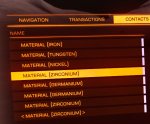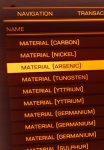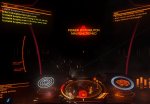LAST PART
(and the inevitable )
)
I get in the buggy and decide to prospect
YTTRIUM , a 1st for me

And my 1st ARSENIC , all within a few km of each other

and many rares

and more

and the odd sentrygun and drones

What a sight !

Cmdr Bunjeejumper tries to squish me in his Anaconda, only lost 10%

Time to leave the planet, there is no chance of recall and takeoff as I know it is definitely death.
With that in mind I self destruct to get back in ship in orbit and see what chances I have there!

Ouch !!!

Once in the ship I initiate Super Cruise and inch slowly away from planet and the star.
Temperature starts rising, and in the midst of my death throws my aussie friend decides to chat
Everything starts failing, including my hopes

Temperature at 202%
3 seconds later KABOOM

I am now at Shinrarta and tooling up to visit the Monolith
(and the inevitable
I get in the buggy and decide to prospect
YTTRIUM , a 1st for me

And my 1st ARSENIC , all within a few km of each other

and many rares

and more

and the odd sentrygun and drones

What a sight !
Cmdr Bunjeejumper tries to squish me in his Anaconda, only lost 10%

Time to leave the planet, there is no chance of recall and takeoff as I know it is definitely death.
With that in mind I self destruct to get back in ship in orbit and see what chances I have there!

Ouch !!!

Once in the ship I initiate Super Cruise and inch slowly away from planet and the star.
Temperature starts rising, and in the midst of my death throws my aussie friend decides to chat
Everything starts failing, including my hopes

Temperature at 202%
3 seconds later KABOOM

I am now at Shinrarta and tooling up to visit the Monolith



